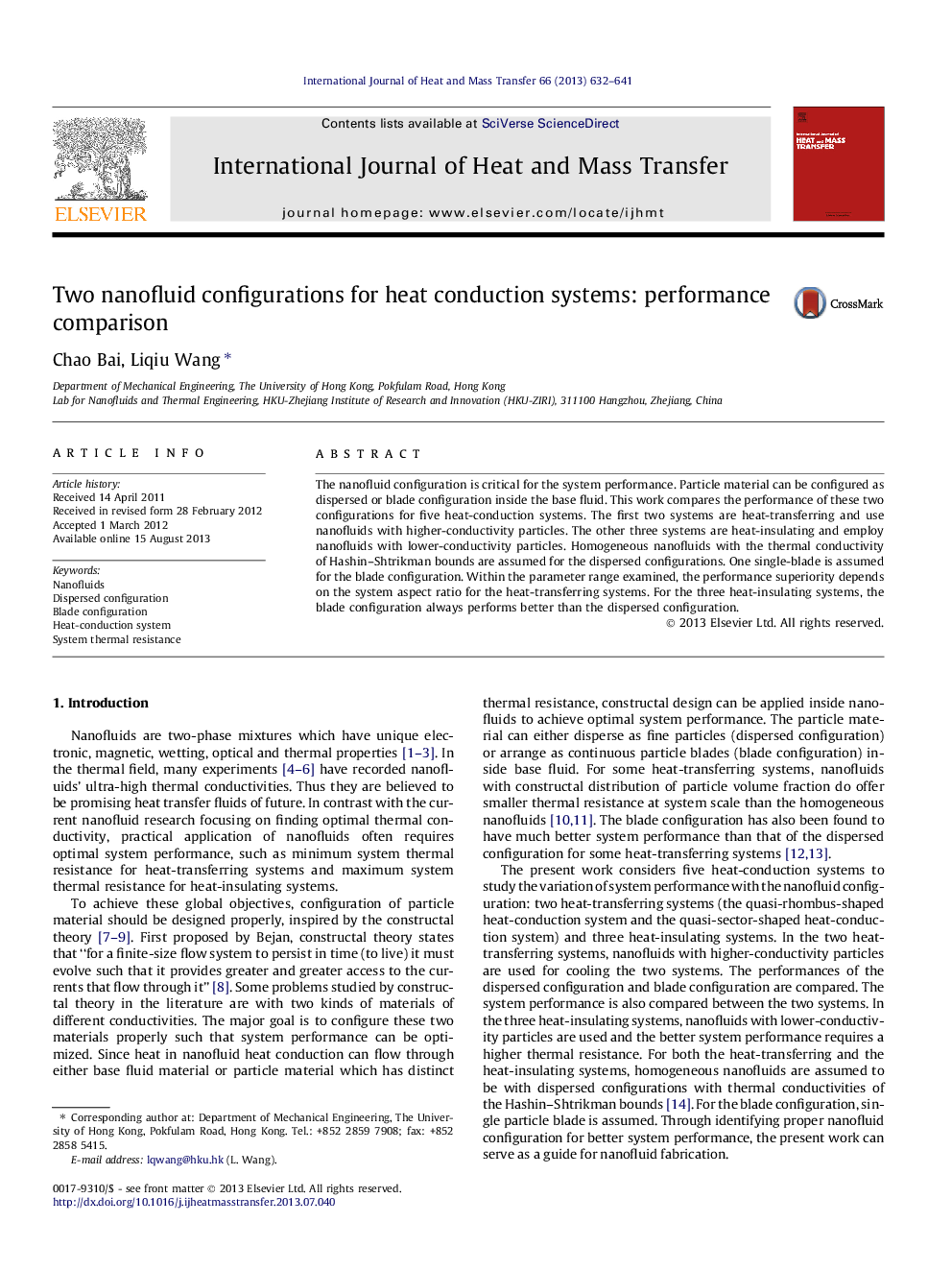| Article ID | Journal | Published Year | Pages | File Type |
|---|---|---|---|---|
| 7058152 | International Journal of Heat and Mass Transfer | 2013 | 10 Pages |
Abstract
The nanofluid configuration is critical for the system performance. Particle material can be configured as dispersed or blade configuration inside the base fluid. This work compares the performance of these two configurations for five heat-conduction systems. The first two systems are heat-transferring and use nanofluids with higher-conductivity particles. The other three systems are heat-insulating and employ nanofluids with lower-conductivity particles. Homogeneous nanofluids with the thermal conductivity of Hashin-Shtrikman bounds are assumed for the dispersed configurations. One single-blade is assumed for the blade configuration. Within the parameter range examined, the performance superiority depends on the system aspect ratio for the heat-transferring systems. For the three heat-insulating systems, the blade configuration always performs better than the dispersed configuration.
Keywords
Related Topics
Physical Sciences and Engineering
Chemical Engineering
Fluid Flow and Transfer Processes
Authors
Chao Bai, Liqiu Wang,
